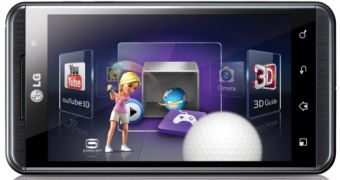LG announced last week the global availability of its first 3D Android smartphone, the Optimus 3D, but has yet to disclose the phone's release schedule in various regions and countries.
Lately, the phone has been confirmed in the UK, Australia, India, Canada and United States (as LG Thrill 4G).
LG officials confirmed that Romanian customers will also be able to purchase the Optimus 3D as soon as the end of July, at a price that will be disclosed in due time.
Although a precise release date hasn't been revealed yet, it looks like Romanian customers will have to wait at least one more month to get the Optimus 3D.
Equipped with a high-speed dual-core and dual channel 1GHz ARM Cortex-A9 processor, complemented by a PowerVR SGX540 GPU, the phone packs 512 MB RAM and 8 GB of internal memory.
Furthermore, the Optimus 3D features dual-channel configuration, which means that data transfers take place simultaneously between the dual-core and dual-memory, resulting in consistently faster performance.
The phone's main attraction is the 4.3-inch 3D LCD capacitive touchscreen with 16 million colors and 480 x 800 pixels resolution.
One of the first phones to feature 3D technology, the Optimus 3D offers users the possibility to enjoy 3D content without the need of glasses.
The phone will be delivered with dual 5-megapixel stereoscopic 3D cameras, so users will be able to capture crystal-clear 3D images and record 720p HD 3D videos.
The smartphone is shipped with Android 2.2 on board, which will be upgradable to 2.3 Gingerbread at a later date.
Users can share all the captured 3D content with 3D TVs via an HDMI 1.4 connection using a DLNA Certified device. In addition, users can upload and stream 3D content on YouTube's dedicated 3D channel.
The LG Optimus 3D is delivered with the world's first 3D augmented reality (AR) browser, which was developed in collaboration with AR pioneer Wikitude.
The smartphone is powered by a high-capacity 1500 mAh Li-Ion battery that should provide up to 100 hours of standby time or up to 4 hours of talk time.

 14 DAY TRIAL //
14 DAY TRIAL //